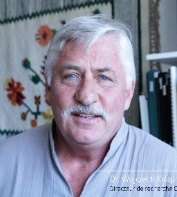 |
Wojciech Knap obtained his PhD from Faculty of Physics –University of Warsaw Poland and got a permanent assistant professor position at Experimental Solid State Physics Department . His PhD concerned the Terahertz (Far infrared) properties of narrow gap semiconductors HgTe and InSb. In 1987 he left to France where he holds a Director of Research position at Charles Coulomb Laboratory -CNRS Montpellier. Between 1999 and 2001 he worked also at– Rensselaer Polytechnic Institute USA – group of Prof. M.Shur. He spent also a year and works regularly by a few months stays with Tohoku University -group of Prof. T.Otsuji. Currently one of his main occupation is settling a central European THz Research unit – CENTERA Laboratories – at IHPP-Polish Academy of Sciences. His main scientific interests are : Fair Infrared-FIR (Terahertz - THz) properties of semiconductors, and Terahertz Plasma excitations in nanostructures. |
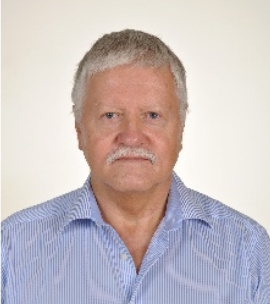 |
Paweł Krawczyk studied physics at the University of Warsaw, Poland, where he also received his Ph. D. in 1984. His professional work merges experiences in the area of research, project and team management. In 1979-1991 he was a researcher at the University of Warsaw, where he specialized in the theory and phenomenology of high energy physics. In 1984 he spend a leave of absence at CERN as a Scientific Associate and in 1987-1988 he became a Humboldt Fellow at DESY. From 1991 till 2009 he moved to the industry and worked at a number of managerial positions at leading IT companies. Since 2009 he has been working at NCBJ (Poland), till 2016 leading its HITEC Division aimed at commercialization particle acceleration research results. He also coordinated international collaboration of HITEC which culminated in the manufacturing of PIMS accelerating cavities for CERN LINAC4. Since 2017 he has been responsible for managing selected research and development projects conducted at NCBJ. He was a member of a team coordinating the supply of Polish in-kind contribution for large research infrastructures: Eu-XFEL (Hamburg) and ESS (Lund) and also lead the NCBJ participation in QUACO project, the aim of which was a supply of novel superconductive quadrupole correctors for HL-LHC. Since 2018 he has become a leader of the PolFEL project with the goal of construction at NCBJ of a Free Electron Laser based on a fully superconductive accelerator and capable of delivering radiation ranging from VUV through IR till THz. |
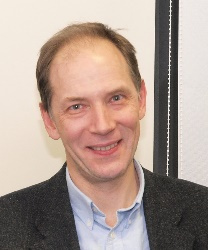 |
Manfred Helm studied physics at the University of Innsbruck, Austria, where he received his Ph.D. degree in 1987 with research on far infrared (THz) magnetospectroscopy of semiconductors. Afterwards he was a postdoc at Bellcore (USA) for three years and then spent ten years at the University of Linz (Austria). In 2000 he became institute director at the Helmholtz-Zentrum Dresden-Rossendorf (HZDR) and was appointed at the same time to full professor at the TU Dresden. At HZDR he is in charge of using the IR/THz free-electron laser FELBE for solid-state spectroscopy. His main research areas are the physics of semiconductor quantum structures, ultrafast and THz spectroscopy as well as novel infrared/THz detectors and sources. He is author or co-author of more than 400 refereed scientific publications with over 9000 citations (Hirsch index around 50). |
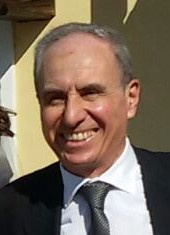 |
Gian Piero Gallerano studied Physics at the University of Rome, Italy, where he received his Laurea Degree (Ph.D.) with honors in 1980 with the design and realization of a tunable color center laser in the near infrared. Afterwards he was a Research Fellow at the High Power Laser Laboratory, ENEA Research Center, Frascati, where he became a Staff Researcher in 1983 dealing with the design of optical resonators for infrared free electron lasers and excimer lasers. In the years 2001-2004 he coordinated the European project THz-BRIDGE, involving ten research institutes in the study the interaction of THz radiation with biological systems. Since 2010 he has been the Head of the Radiation Sources, Diagnostics and Laser-matter interaction Laboratory at ENEA-Frascati. His current areas of interest include generation of THz radiation and its application in the biological, biomedical, environmental and art conservation fields, coherent emission from r.f. modulated electron beams, free electron lasers and their applications. He is author/co-author of over 280 publications with over 2900 citations, H-index 27, i10-index 65. He holds 3 international patents on the above subjects. |
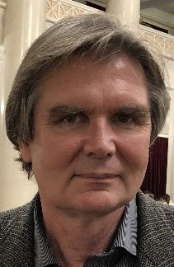 |
Sergey Ganichev obtained his diploma in physics from St. Petersburg Politechnical University, PhD from the same institution and habilitation from the Ioffe Institute St. Petersburg and the second one from the University of Regensburg. He started his scientific carrier at Ioffe Institute, then received Alexander von Humboldt scholarship and come to Regensburg (Germany). Currently he is professor at the Physics Department of the University of Regensburg. His main scientific interests are: terahertz and infrared physics, semiconductor physics, laser physics, optics, opto-electronics, terahertz laser technology. In 1990 he received A.F. Ioffe Prize for a series of works on: "Submillimeter Spectroscopy of Semiconductors at High Excitation Level".and in 1999 Ya.I. Frenkel Prize and Medal for work on:” Tunneling Ionization of Deep Impurities in Semiconductors by Terahertz Fields”. He authored and and co-authored a monography “Intense Terahertz Excitation of Semiconductors”, ten chapters in various books, more than 300 papers and his H factor is 49. |
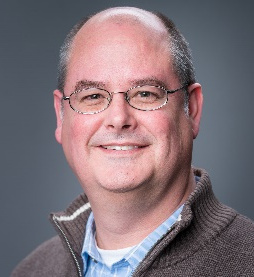 |
John Michael Klopf earned his Ph.D. in Engineering Physics from the University of Virginia in 2005 on the topic of ultrafast carrier dynamics in layered III-V semiconductor materials. Before graduate school, he worked as a Research Associate at the CAMD synchrotron facility at Louisiana State University. Following graduate school, he joined Jefferson Lab in 2005 as a postdoctoral fellow in charge of the high power CSR THz source on the accelerator for the Jefferson Lab FEL. He continued through 2014 as a staff scientist in the FEL Division of Jefferson Lab, working with the IR and UV FELs and the CSR THz source. His work at Jefferson Lab included both accelerator studies and numerous applications of the high power FEL and THz sources as well as tabletop sources for the investigation and modification of materials. Since 2015, he has been the Beamline Scientist in charge of the FELBE FEL sources at the ELBE Center for High-Power Radiation Sources at the Helmholtz-Zentrum Dresden-Rossendorf. He has authored and coauthored over 60 publications and has been awarded a patent for laser enhancement of superconducting surfaces (US Patent #: 8,812,068). |
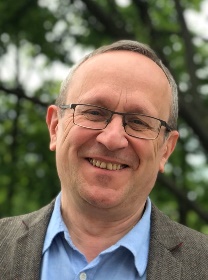 |
Jerzy Łusakowski graduated from Faculty of Physics, University of Warsaw in 1985 and since then he has been working at this faculty in Solid State Division of Institute of Experimental Physics. His PhD was devoted to low-temperature magnetotransport of photoexcited electrons in semi-insulating GaAs including analysis of magnetic-field-induced localization and impact ionization of shallow donors in this material. As a post-doc he worked in 1997-1999 in High Magnetic Field Laboratory, Grenoble and in 2004-2006 at University of Montpellier. For the last 15 he is leading a terahertz spectroscopy group which main activity is focused on terahertz excitations of a two-dimensional electron gas in in different types of quantum structures and field-effect transistors. He is an author of more than 160 papers. |
 |
Katarzyna Nowakowska-Langier specializes in the field of plasma surface engineering. She graduated of the Faculty of Metallurgy and Materials Science, Częstochowa University of Technology (M.Sc degree) and the Faculty of Materials Science and Engineering of the Warsaw University of Technology (Ph.D and D.Sc. degrees). Currently she works as a professor at the National Center for Nuclear Research in the Department of Materials Physics, where she is the head of the Plasma and Ion Technologies division. She obtained a Ph.D in technical sciences in 2007 at the Faculty of Materials Science and Engineering of the Warsaw University of Technology. In 2020, she obtained the D.Sc in the field of Engineering and Technical Sciences, in the discipline of Materials Engineering. The scope of scientific activity covers research related to materials engineering, in particular plasma surface engineering and issues related to pulsed plasma in the context of its use in the synthesis of materials and coatings, as well as research, including the effects of interaction with the surface of materials, by actively participating in shaping the their structure and properties. She is the author and co-author of over 66 publications in international journals and her H factor is 13. |
|
Milan Orlita obtained his PhD degree at the Charles University in Prague. At present is a permanent researcher at the Laboratoire National des Champs Magnétiques Intenses, CNRS in Grenoble. His research activities are mainly focused on magneto-optical properties of solids - semiconductors, semimetals and topological materials, in particular - in the THz and infrared spectral ranges. |
|
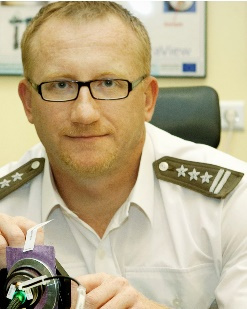 |
Norbert Pałka received an MSc degree in physics (with a focus in fiber optics technology) and a Ph.D. and D.Sc. degrees in optoelectronics, both from the Military University of Technology, Warsaw, Poland, in 2003 and 2016, respectively. In 1999, he joined the Military University of Technology as a researcher at the Institute of Optoelectronics. Currently, he is a head of Security System Group. Since 1999, his scientific interests have been in various sensors and systems for security: fiber optics, CCTV, and thermal cameras. Since 2008, he has focused on terahertz technology: spectroscopy, detection of explosives, body scanners, THz optics, LCTT materials, and nondestructive evaluation of composite materials. He is author and co-author of more than 70 publications and his H factor is 19. |
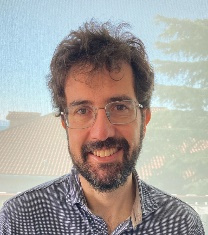 |
Andrea Perucchi is Senior Scientist at Elettra - Sincrotrone Trieste. He held a Master’s degree in Physics at University of Rome “La Sapienza” in 2001, and the Ph.D. in Natural Science at ETH Zurich in 2005. In the same year he joined the Elettra synchrotron in Trieste (Italy), in charge of infrared and THz based activities in condensed matter at the SISSI beamline. After winning as a PI, a FIRB “Futuro in Ricerca” grant, he led the project for the construction of the TeraFERMI beamline for THz non-linear and pump-probe studies. He is now responsible for the TeraFERMI beamline operation. His research interests span from Strongly Correlated Electron Systems to Low-Dimensional materials, Charge-Density-Wave, Superconductivity, Spin Liquids, Colossal and Giant Magnetoresistance, Oxide Heterostructures, Plasmonics. He is the author of over 130 publications in international journals (Scopus h-index 26) and 2 book chapters. |
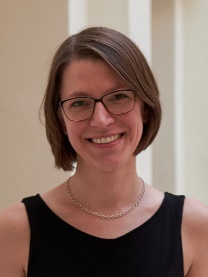 |
Agnieszka Siemion received a M.S. in optoelectronics from the Warsaw University of Technology, Warsaw, Poland, in 2007 and a Ph.D. in physical sciences from the Warsaw University of Technology, Warsaw, Poland, in 2012. Since 2012, she has been an Assistant Professor with the Optical Information Processing Laboratory in the Faculty of Physics at the Warsaw University of Technology. She was the beneficiary of a Ph.D. grant No. N N519 659540. She was the winner of the Development Program of the Warsaw University of Technology departure scholarship for Ph.D. students organized by Center of Advanced Studies of Warsaw University of Technology (a 3-month visit to the University of Savoie at IMEP-LAHC Laboratory in 2010). She is the beneficiary of grants in Lider IX from The National Centre for Research and Development and OPUS 18 from National Science Centre. Her research interests include optical information processing, beam shaping, holography, self-imaging, and THz optics. She authored and co-authored more than 60 publications and her H factor is 12. |
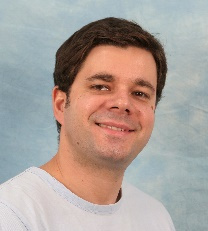 |
Nikola Stojanovic received a M.S. in physics from the Belgrade University, Belgrade, Serbia, in 2002 and a Ph.D. in natural sciences from the University of Duisburg-Essen, Duisburg, Germany, in 2008. From 2008-2009 he was a PostDoc at XUV-FEL, FLASH at DESY, Hamburg, working on FEL and laser synchronization in the user experiments. From 2009-2020 he was leading the team at THz beamline at FLASH, he worked on THz beamline and undulator upgrades, built THz/Laser lab and performed many experiments. Since 2020 he is a leaing a Time Resolved Spectroscopy Group at German Aerospace Center (DLR) in Berlin, Germany, where he is developing time-domain spectroscopies for space research. He is authored of more than 40 publications and his H factor is 25. |
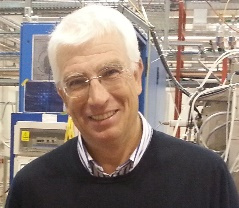 |
Michele Svandrlik is presently the General Manager of Elettra Sincrotrone Trieste. After his degree in electronic engineering he joined the radiofrequency group at Elettra, where he was responsible for the design of the Elettra RF cavities, first for the normal conducting main RF system and then for the superconducting third harmonic system. Then he was project leader for the Elettra new full energy injector, a 2.5 GeV booster synchrotron, delivered in 2007 on time and on budget. He was later appointed as Head of Engineering of the FERMI Free Electron Laser (FEL) project until 2010 and then he has served as Director of the facility until the end of 2018. Since 2012 he is member of the FELs‐OF‐EUROPE Steering Committee, which he chaired from July 2017 to June 2021. He is presently the Chair of the Research and Development Board of LEAPS (League of European Accelerator‐based Photon Sources). |
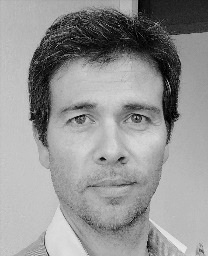 |
Frederic Teppe was born in New Caledonia, he graduated from the University of Sciences of Montpellier in 2003. He worked as a post-doctoral fellow at Rensellear Polytechnic Institute, NY, USA, and in 2005 he obtained a permanent position at the National Center of Scientific Research (CNRS) Montpellier, France, where he works until now. He was visiting professor at Tohoku University, Sendai, Japan in 2019 and High Pressure Physics Institute, Warsaw, Poland in 2021. His main scientific interests are: i) terahertz properties of semiconductors, ii) collective phenomena in low dimensional structures and iii) topological and Dirac matter. He is the co-author of more than 200 articles and proceedings.
|
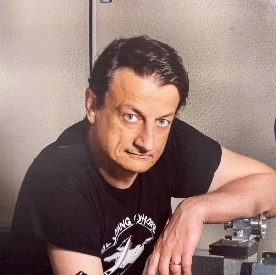 |
Alessandro Tredicucci was born in Chiavari, Italy, in 1968. He received the Laurea degree in physics from the University of Pisa in 1992 and the Ph.D. degree in physics from the Scuola Normale Superiore of Pisa in 1997. He then moved to Bell Laboratories, Lucent Technologies, Murray Hill, and in 2000 to the NEST center of Scuola Normale Superiore and CNR-NANO. He is presently Full Professor of Condensed Matter Physics at the Physics Department of Pisa University. His research activities are mainly concerned with devices for the generation and detection of THz radiation and with the investigation of new regimes of light-matter interaction. The demonstration of a THz quantum cascade laser, the first observation of intersubband polaritons, and the development of graphene-based THz detectors are among his best-known achievements. He has co-authored about 300 publications, has given more than 100 invited talks at international conferences, and holds 16 international patents. He is presently Associate Editor of Applied Physics Letters.Prof. Tredicucci was the recipient of several awards, among which the Panizza award for opto-electronics of the Italian Physical Society, the Campisano prize for condensed matter physics of the CNR, the Nick Holonyak Jr. award for semiconductor optics of the OSA (of which he is also a Fellow), and the Occhialini medal of IOP and SIF. He was the principal investigator of the advanced grant SouLMan of the European Research Council. |
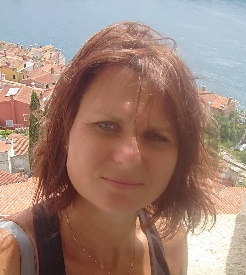 |
Adriana Wawrzyniak, PhD, She received her PhD in 2006 in the liquid crystal field at both the Jagiellonian University (JU), Krakow, Poland and Université du Littoral Côte d'Opale, Calais, France. In 2006 she took the position at the Institute of Physics, JU. In 2008 she was a PostDoc at the Technical University,Darmstadt, Germany. In years 2009-2015 she became the project coordinator responsible for the design, commissioning and operation of accelerators at the Solaris center. She spent four years at the MAXIV Laboratory, Lund, Sweden, where she actively participated in the design phase of both MAXIV and Solaris accelerators. Since January 2016 she is appointed as the Accelerators’ Deputy Director responsible for the operation, maintenance and development of accelerators at the Solaris National Synchrotron Radiation Centre, JU, Krakow, Poland. In 2015-2020, she was a member of the Machine Advisory Committee at ESRF, Grenoble, France. Currently, she is also project leader form SOLARIS site of BEATS, LEAPS-INNOV and POLFEL-diagnostics projects. She is the author and co-author of a number of publications in the field of liquid crystal physics, accelerator physics and beam diagnostics. |
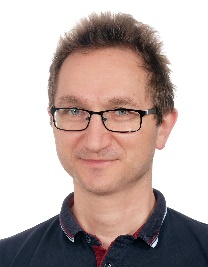 |
Przemysław Zagrajek received a M.S. in solid state physics from the Warsaw University of Technology, Warsaw, Poland, in 2005 and a Ph.D. in physical sciences from the Institute of Physics, Polish Academy of Sciences, Warsaw, Poland, in 2012. His area of interest during master studies was tunneling of spin polarized electrons through quantum dots and wires. During Ph.D. studies he focused on noise spectroscopy in nanostructures. Since 2012, he has been an Assistant Professor with the Laboratory of Terahertz Technologies in Institute of Optoelectronics, Military University of Technology. His research interests include sources and detectors of THz radiation, THz spectroscopy, communication in THz range. He is author and co-author of more than 60 publications and his H factor is 9. |
Download current event:
Calendar file
In order to enable an iCal export link, your account needs to have an API key created. This key enables other applications to access data from within Indico even when you are neither using nor logged into the Indico system yourself with the link provided. Once created, you can manage your key at any time by going to 'My Profile' and looking under the tab entitled 'HTTP API'. Further information about HTTP API keys can be found in the Indico documentation.
Additionally to having an API key associated with your account, exporting private event information requires the usage of a persistent signature. This enables API URLs which do not expire after a few minutes so while the setting is active, anyone in possession of the link provided can access the information. Due to this, it is extremely important that you keep these links private and for your use only. If you think someone else may have acquired access to a link using this key in the future, you must immediately create a new key pair on the 'My Profile' page under the 'HTTP API' and update the iCalendar links afterwards.
Permanent link for public information only:
Permanent link for all public and protected information:
Please use CTRL + C to copy this URL
Detailed timetable
